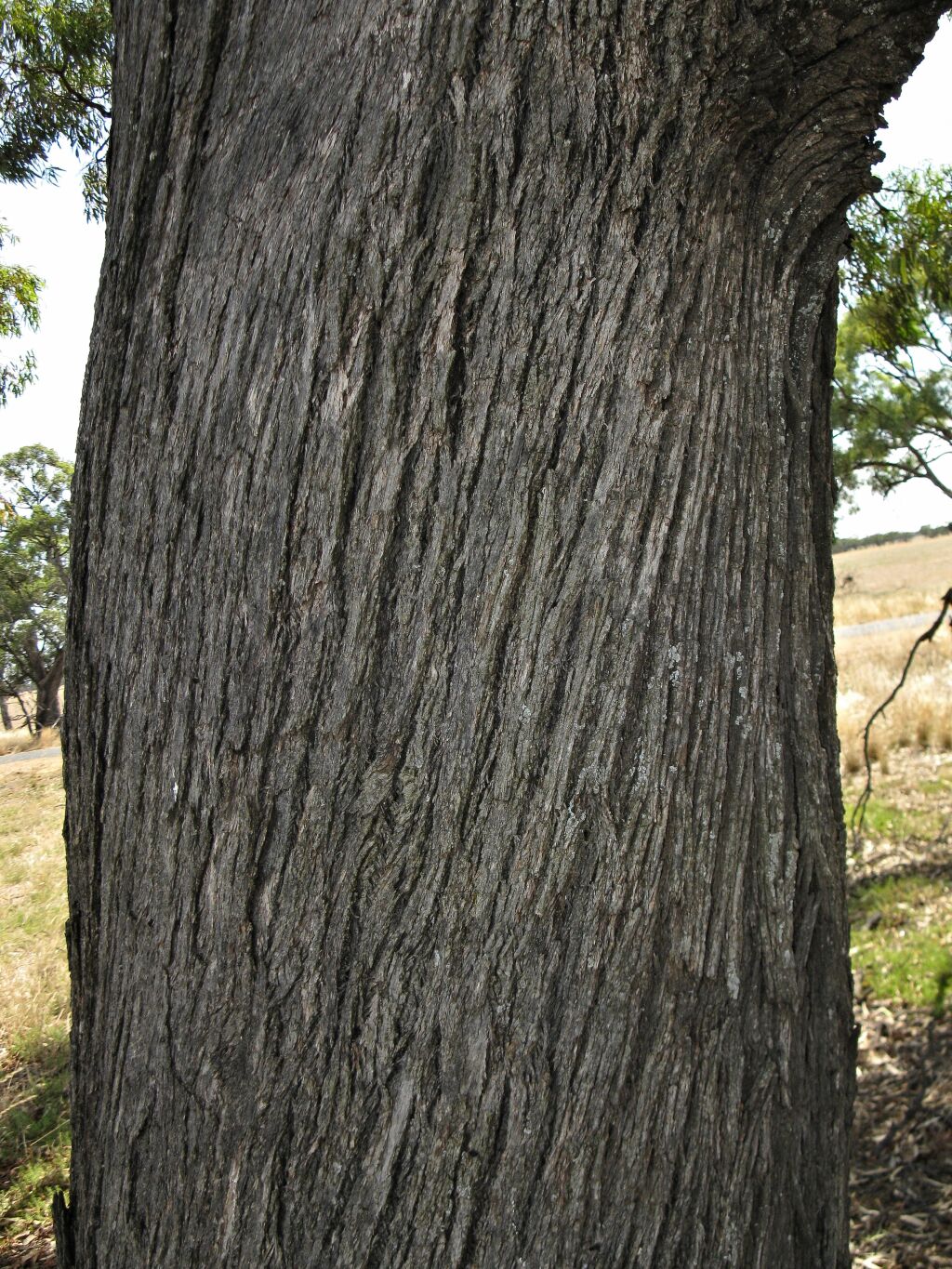Eucalyptus largiflorens
F.Muell. Black BoxTree to 20 m tall; bark rough to the small branches, fibrous, dark grey. Juvenile leaves shortly petiolate, alternate, linear, often curved, to 15 cm long, 1 cm wide, bluish; adult leaves petiolate, narrowly lanceolate, 9–18 cm long, 0.8–1.8 cm wide, concolorous, dull, green or blue-green; intramarginal vein remote from edge; reticulation very dense, with scattered intersectional oil glands. Inflorescence terminal panicles; peduncles to 1 cm long, 7–11-flowered; buds pedicellate, clavate to ovoid, to 0.5 cm long, 0.3 cm diam., scar present or outer operculum shed late; operculum conical to hemispherical; stamens irregularly flexed; anthers adnate, globoid; ovules in 4 vertical rows; flowers white, rarely pink. Fruit pedicellate, cupular to obconical, to 0.6 cm long, 0.5 cm diam.; disc descending; valves (3)4, below rim; seed brown, irregularly ovoid and slightly flattened, surface shallowly reticulate, hilum ventral. Flowers spring–autumn.
LoM, MuM, Wim, VRiv, MSB, RobP, MuF, Gold, CVU, GGr, DunT, NIS. Also SA, Qld, NSW. West from Nathalia and north from Edenhope, on flood-plains along streams.
Forms open woodlands, often in pure stands, on black-soiled or clayey, seasonally flooded riverine plains. It is distinguished from other tree box species by the habitat, rough bark extending to the small branches and dull bluish linear juvenile leaves.
Stands north of Edenhope with atypically broad juvenile leaves, glossy, green adult leaves and the largest fruit seen for this species, are found growing on clay loam.
Presumed hybrids with Eucalyptus camaldulensis are sometimes included in E. ×oxypoma (see note under that species).
Brooker, M.I.H.; Slee, A.V. (1996). Eucalyptus. In: Walsh, N.G.; Entwisle, T.J., Flora of Victoria Vol. 3, Dicotyledons Winteraceae to Myrtaceae, pp. 946–1009. Inkata Press, Melbourne.
 Spinning
Spinning


